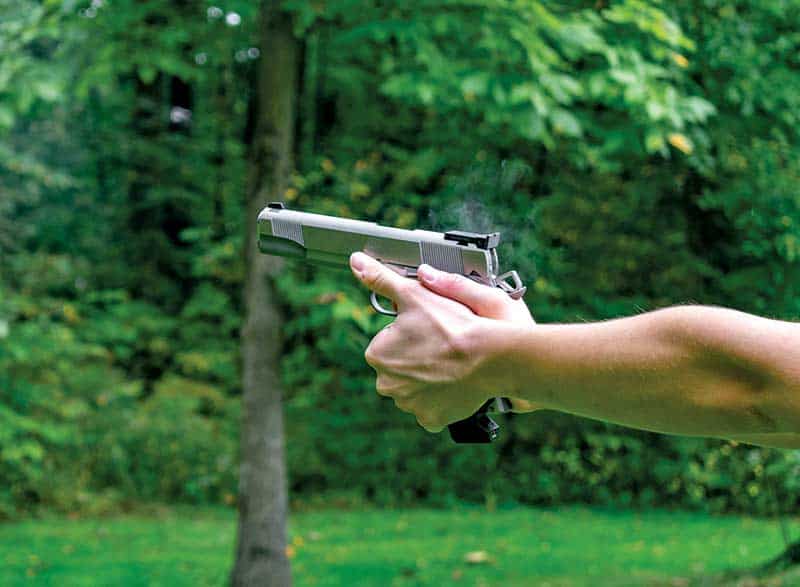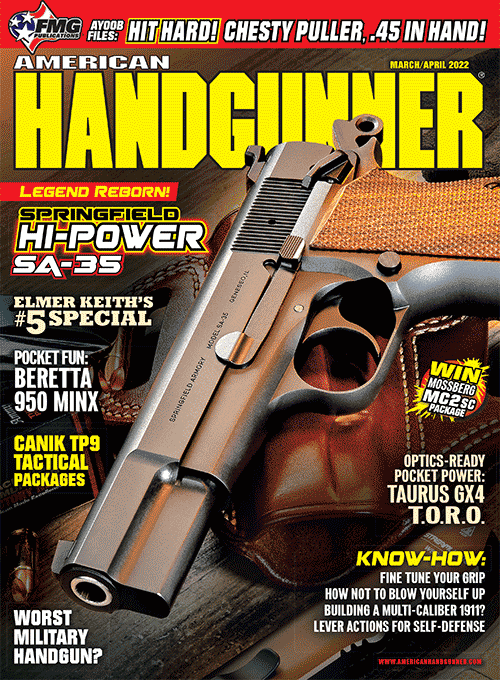Fine Tune Your Handgun Grip with High Tech: Part Deux
Have you ever thought about the underdog? Everyone roots for them in movies, but when choosing teams, they still aren’t the first choice. Concerning pistol grip, I’ve always paid more attention to the location of my thumbs and palms than anything else. The forefingers wrapped around the front of the grip and landed where they may. My trigger finger received extra attention, of course, but the pinkie was forgotten and ignored.
The Stereotype
Thumbs have wars. Though the pinkie has long been used in adolescent secret-keeping rituals, it’s largely considered weaker than the other fingers. In fact, drinking tea, or doing anything else with the pinkie finger extended, is viewed as a sign of royalty, but also of weakness and extreme femininity. You also never hear of anyone squashing a bug with their “mere pinkie.”
But the pinkie finger can be used to better manage recoil. Yes, you read that right. The thinnest, weakest finger can make all the difference. Continuing my explorations in grip and recoil management, I set about refining the technique.
One Thing At A Time
Settling into a familiar rhythm and making small changes proved much easier than making drastic grip changes, as I had done previously. One of the greatest lessons that has stuck with me through the years came both from an English teacher and coach (you know it must be good when it comes from multiple sources). You cannot try to do everything at once, so focus on learning one thing at a time. Try too many things at once and not only will you be overwhelmed, but it will be difficult to ascertain what is actually going right and what is going wrong.
New Game In Town
This time I used a traditional two-handed grip and varied pressure of my support and firing hands, with an emphasis on the pinkie finger. I did make one other major change, transitioning from my Stoeger STR-9 to a 9mm Springfield Armory Loaded Target 1911. The gun was beautiful, easy to hold and heavy. I’m pretty certain it could be used as a weapon in and of itself, should one ever run out of ammo.
I started out dry-firing, getting a feel for the new gun and being mindful of grip pressure. At first, I accidentally applied extra pressure with my firing hand pinkie, but quickly realized I needed that hand relaxed to not put any muscle tension on the trigger finger. Switching to my support hand pinkie, I watched as slight changes in downward pressure moved the muzzle and sights. I was never truly conscious of exactly how much pressure each of my fingers was applying.
Data Can Be Dangerous
Having immediate access to data can be dangerous. When shooting a rifle match on electronic targets, many people throw shots by jumping off the stock to peer at the monitor displaying their shot value. I had to remind myself not to reference the app between shots or try to tailor what I was doing to improve the results mid-string. Aggregate observations, rather than individual ones, proved much more helpful in painting the larger picture. I specified three different ways of shooting: 1) regular (my traditional two-handed grip without minding pressure), 2) emphasis on support hand — no pinkie, and 3) pinkie support hand (applying consistent downward pressure to the support hand pinkie). The results were astounding.
Average recoil angle was greatly improved with emphasis on the lowly pinkie. Average recoil width was sliced in more than half, indicating greater control. Average recoil angle moved from around -9.45° for the first two methods to a positive 2.60°, indicating a change in direction as well. I likely accidentally applied both downward and right pressure on the support hand pinkie to cause this.
Lightbulb
Ignore the data for a second. While it gives quantitative information and proof of concept, the greatest moment for me was encapsulated in a single, great shot. I don’t really know where it landed on target — there were too many holes to pick from and my eyes were focused on the front sight — but it did feel great. The pistol barely moved in my hands and its movement was predictable and consistent. I could see the effect of the pinkie pressure in my sights. The trick now is to apply the same consistent pressure every time combined with other basics of marksmanship, letting the pinkie slip back into the recesses of my subconscious.








